Ireland-The Proclamation of Independence of the Irish Republic. [POBLACHT NA H EIREANN. THE PROVISIONAL GOVERNMENT OF THE IRISH REPUBLIC TO THE PEOPLE OF IRELAND.] [DUBLIN: CHRISTOPHER BRADY, MICHAEL MOLLOY AND LIAM O'BRIEN, 23 APRIL, 1916] half sheet of the original proclamation of Independence of the Irish Republic (text from "The Irish Republic'' to "...Joseph Plunkett "), text size 292 x 462 mm, paper size 436 x 497mm, printed in a variety of founts on a single sheet, torn and chipped with the loss of a few letters, somewhat browned and discoloured [together with:] "Irish Volunteers. Dublin Brigade. Company Mobilisation Order", printed in black and red, asking for "Arms and Full Supply of Ammunition to be Carried", unused, size 84 x 136mm.; both items framed and glazed A very rare half sheet of the original document, printed at Liberty Hall, Dublin, on Easter Sunday 1916, marking the beginning of the "Easter Rising" and effectively inaugurating modern Irish history which ultimately led to the foundation of the Irish Free State. Although 2,500 were intended to be produced only around 1,000 were actually printed; and of these, the vast majority were destroyed in the storming of Liberty Hall and the chaotic events in the surrounding streets. This is one of the rarer half sheets containing the second section of the Proclamation (the document was printed in two halves, with the type being re-set: see further note on sothebys.com), which is the portion which was in the press when British soldiers arrived in the Hall on 27 April 1916. "Copies of this half-print are very rare but one such copy is in the Kilmainham Gaol Museum" (John O'Connor The 1916 Proclamation). we are aware of only five other copies (all but one held in institutions) The full text of the Proclamation was read from the steps of the General Post Office, Sackville (now O'Connell) Street, Dublin, on Easter Monday, 24 April 1916, by Pádraig Pearse, who, with Thomas J. Clarke Seán Mac Diarmada, Thomas MacDonagh, Eamonn Ceannt, James Connolly and Joseph Plunkett the instigators of the Rising, were the signers of the Proclamation. All signatories were executed within a week by the British government, following a swift repression of the rebellion.
Ireland-The Proclamation of Independence of the Irish Republic. [POBLACHT NA H EIREANN. THE PROVISIONAL GOVERNMENT OF THE IRISH REPUBLIC TO THE PEOPLE OF IRELAND.] [DUBLIN: CHRISTOPHER BRADY, MICHAEL MOLLOY AND LIAM O'BRIEN, 23 APRIL, 1916] half sheet of the original proclamation of Independence of the Irish Republic (text from "The Irish Republic'' to "...Joseph Plunkett "), text size 292 x 462 mm, paper size 436 x 497mm, printed in a variety of founts on a single sheet, torn and chipped with the loss of a few letters, somewhat browned and discoloured [together with:] "Irish Volunteers. Dublin Brigade. Company Mobilisation Order", printed in black and red, asking for "Arms and Full Supply of Ammunition to be Carried", unused, size 84 x 136mm.; both items framed and glazed A very rare half sheet of the original document, printed at Liberty Hall, Dublin, on Easter Sunday 1916, marking the beginning of the "Easter Rising" and effectively inaugurating modern Irish history which ultimately led to the foundation of the Irish Free State. Although 2,500 were intended to be produced only around 1,000 were actually printed; and of these, the vast majority were destroyed in the storming of Liberty Hall and the chaotic events in the surrounding streets. This is one of the rarer half sheets containing the second section of the Proclamation (the document was printed in two halves, with the type being re-set: see further note on sothebys.com), which is the portion which was in the press when British soldiers arrived in the Hall on 27 April 1916. "Copies of this half-print are very rare but one such copy is in the Kilmainham Gaol Museum" (John O'Connor The 1916 Proclamation). we are aware of only five other copies (all but one held in institutions) The full text of the Proclamation was read from the steps of the General Post Office, Sackville (now O'Connell) Street, Dublin, on Easter Monday, 24 April 1916, by Pádraig Pearse, who, with Thomas J. Clarke Seán Mac Diarmada, Thomas MacDonagh, Eamonn Ceannt, James Connolly and Joseph Plunkett the instigators of the Rising, were the signers of the Proclamation. All signatories were executed within a week by the British government, following a swift repression of the rebellion.


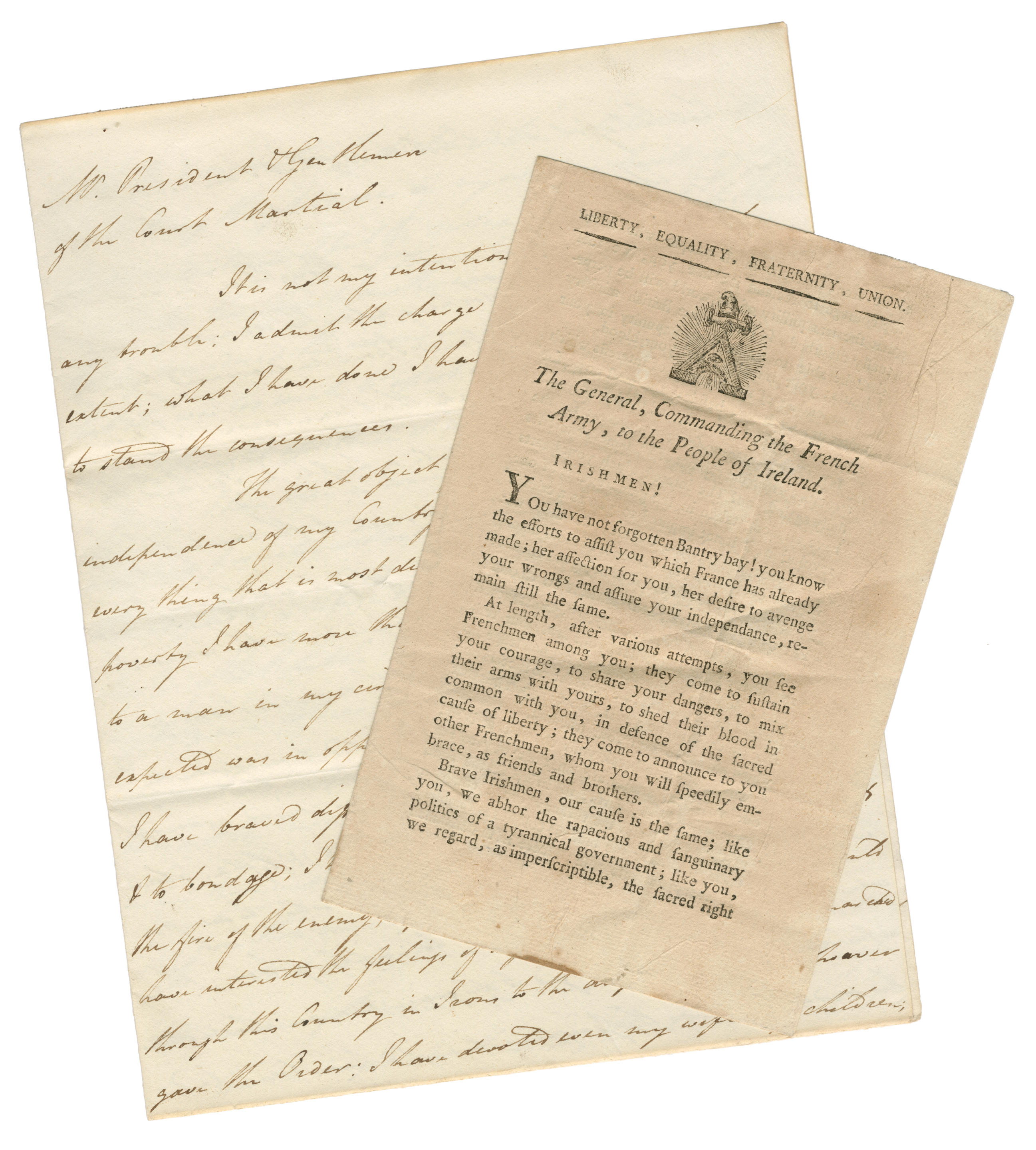

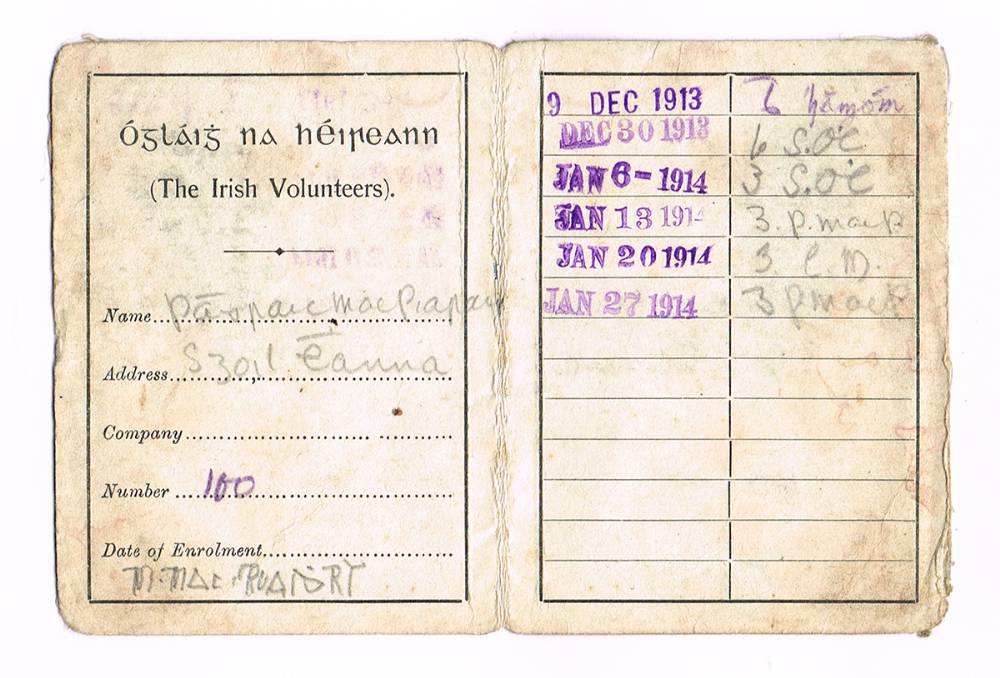
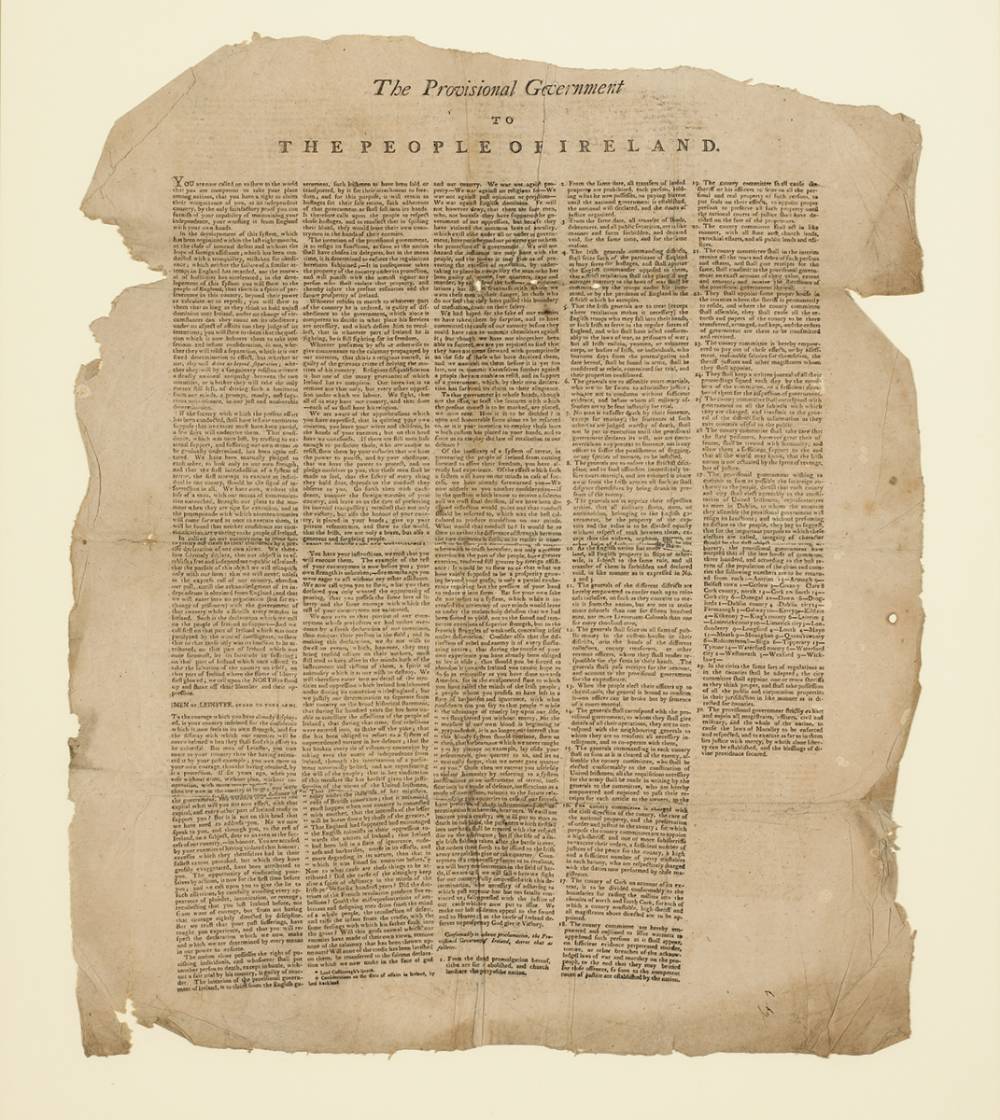
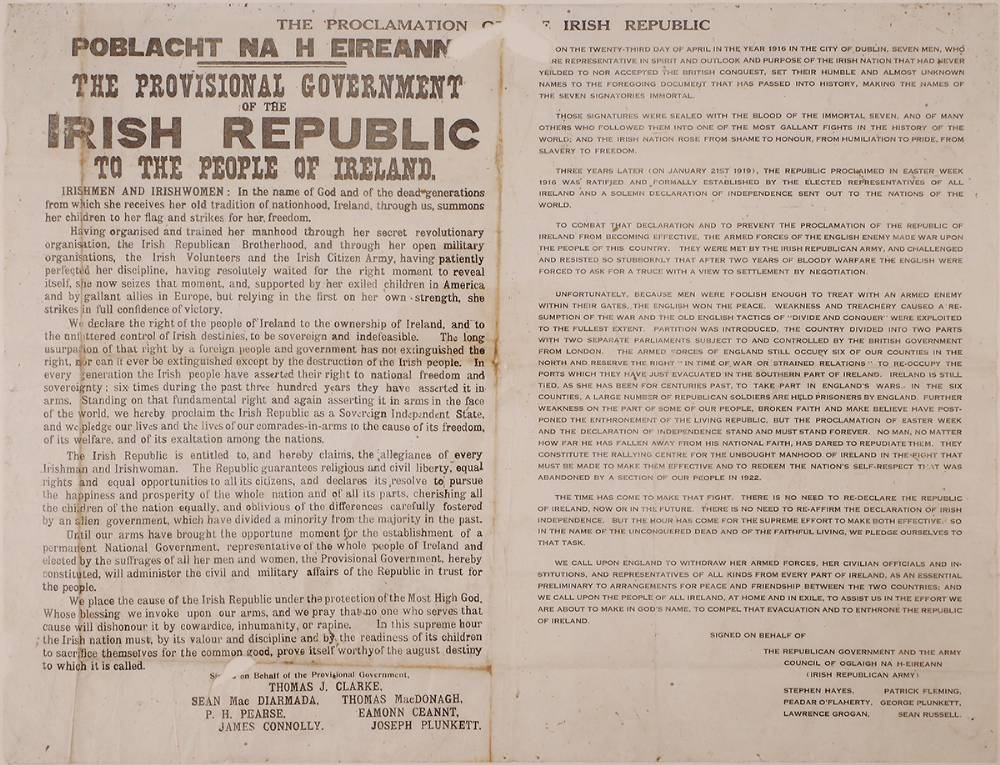
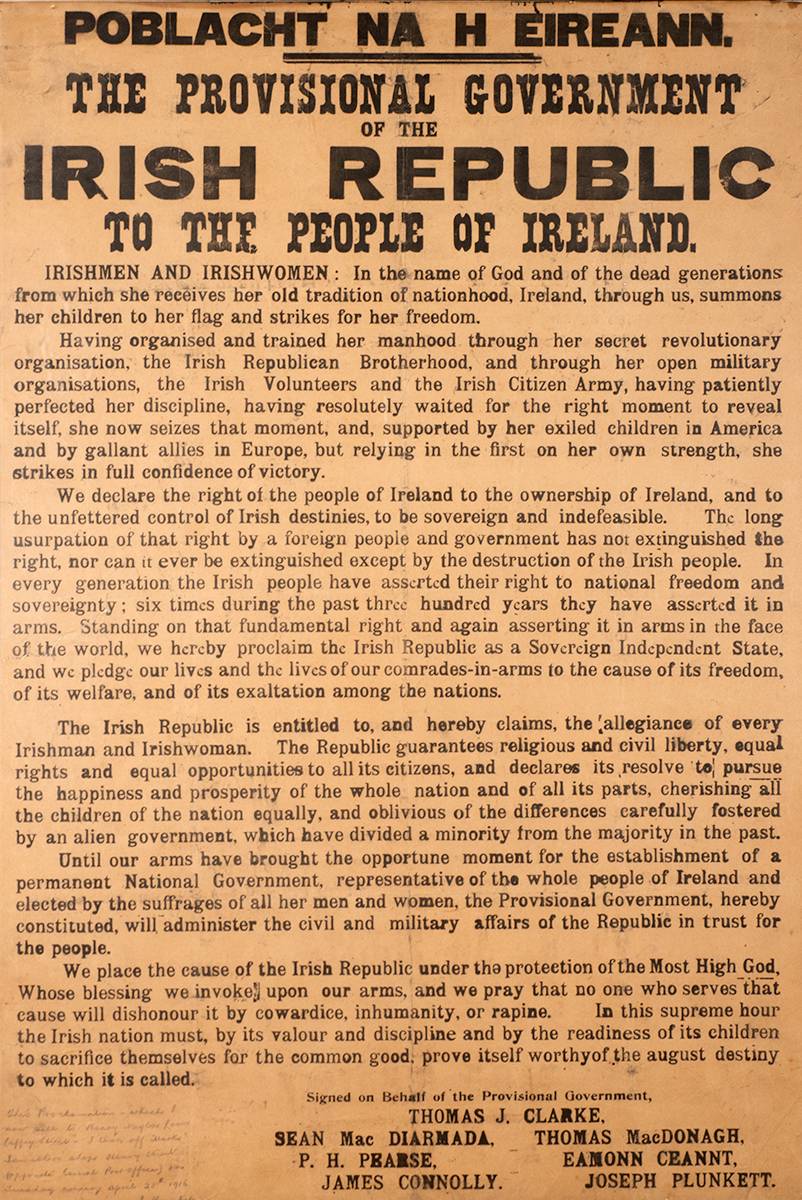

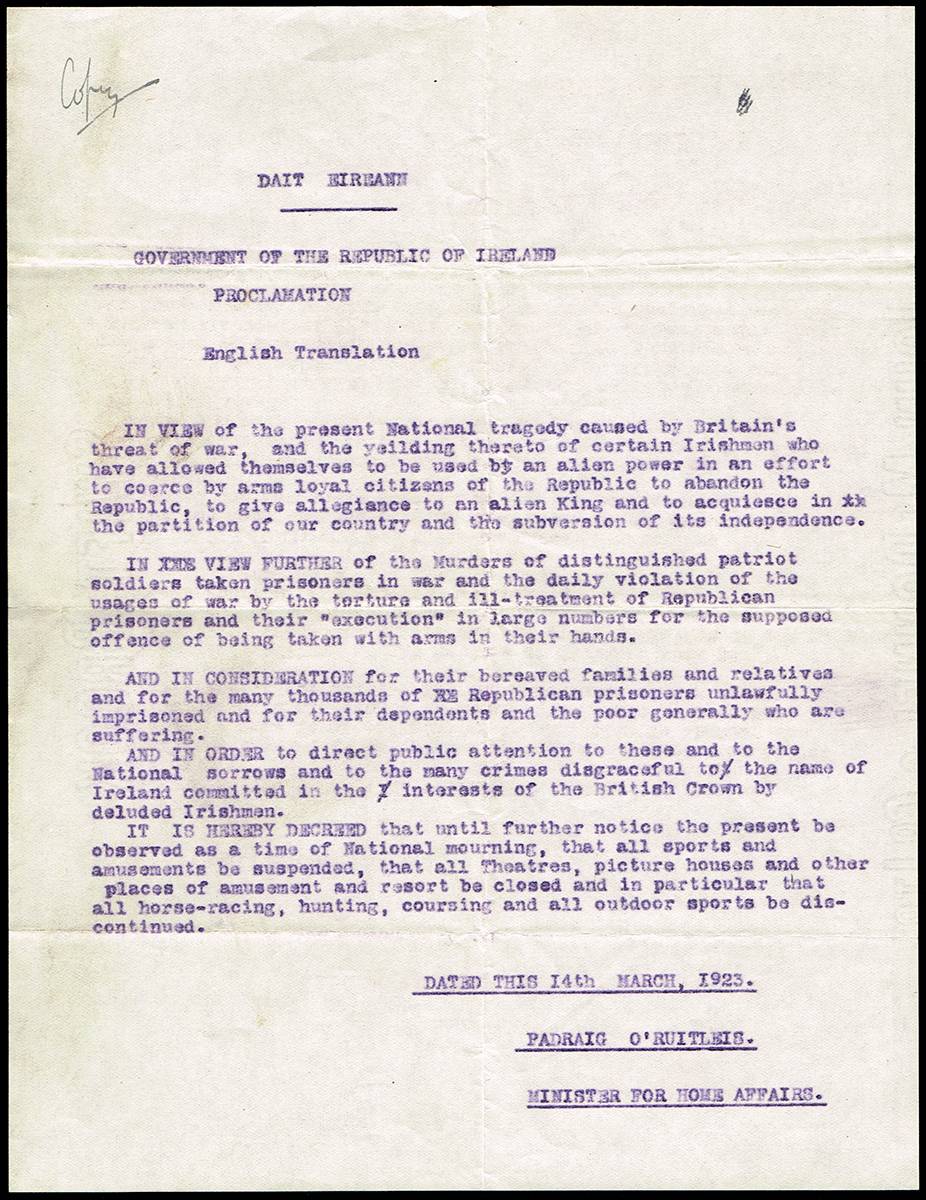


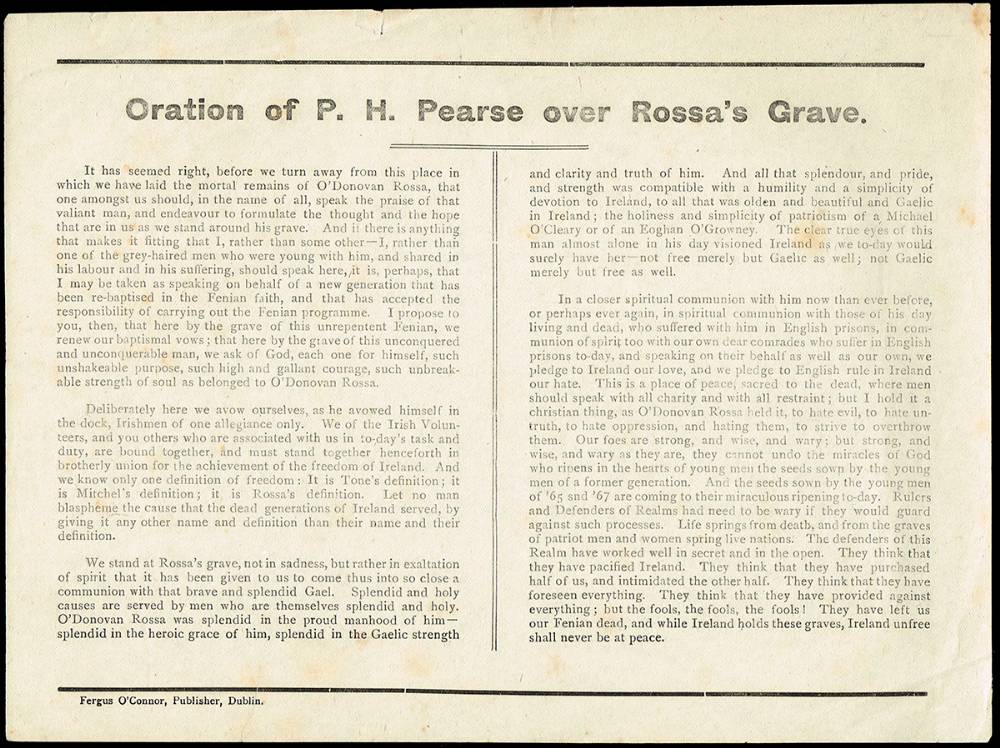

Testen Sie LotSearch und seine Premium-Features 7 Tage - ohne Kosten!
Lassen Sie sich automatisch über neue Objekte in kommenden Auktionen benachrichtigen.
Suchauftrag anlegen